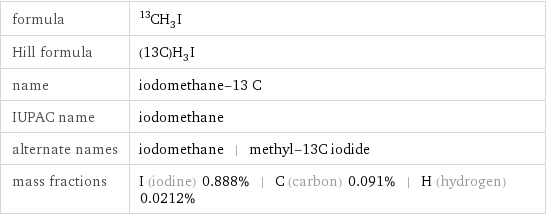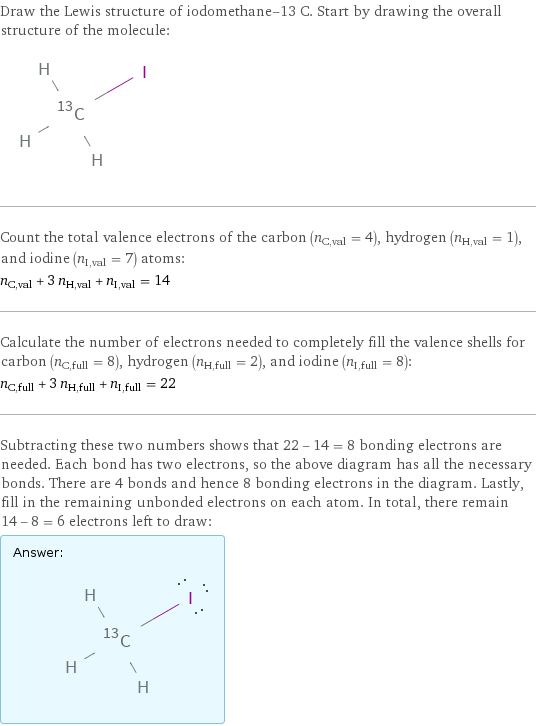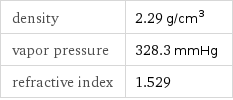Input interpretation

iodomethane-13 C
Chemical names and formulas

formula | ^13CH_3I Hill formula | (13C)H_3I name | iodomethane-13 C IUPAC name | iodomethane alternate names | iodomethane | methyl-13C iodide mass fractions | I (iodine) 0.888% | C (carbon) 0.091% | H (hydrogen) 0.0212%
Lewis structure

Draw the Lewis structure of iodomethane-13 C. Start by drawing the overall structure of the molecule: Count the total valence electrons of the carbon (n_C, val = 4), hydrogen (n_H, val = 1), and iodine (n_I, val = 7) atoms: n_C, val + 3 n_H, val + n_I, val = 14 Calculate the number of electrons needed to completely fill the valence shells for carbon (n_C, full = 8), hydrogen (n_H, full = 2), and iodine (n_I, full = 8): n_C, full + 3 n_H, full + n_I, full = 22 Subtracting these two numbers shows that 22 - 14 = 8 bonding electrons are needed. Each bond has two electrons, so the above diagram has all the necessary bonds. There are 4 bonds and hence 8 bonding electrons in the diagram. Lastly, fill in the remaining unbonded electrons on each atom. In total, there remain 14 - 8 = 6 electrons left to draw: Answer: | |
Basic properties

molar mass | 142.932 g/mol phase | liquid (at STP) melting point | -66.5 °C boiling point | 42 °C density | 2.29 g/cm^3
Units

Liquid properties (at STP)

density | 2.29 g/cm^3 vapor pressure | 328.3 mmHg refractive index | 1.529
Units

Non-standard atom properties

C-13 | 1
Chemical identifiers

CAS number | 4227-95-6 Beilstein number | 1697017 PubChem CID number | 9989367 PubChem SID number | 24856740 SMILES identifier | CI InChI identifier | InChI=1/CH3I/c1-2/h1H3/i1+1 MDL number | MFCD00001075